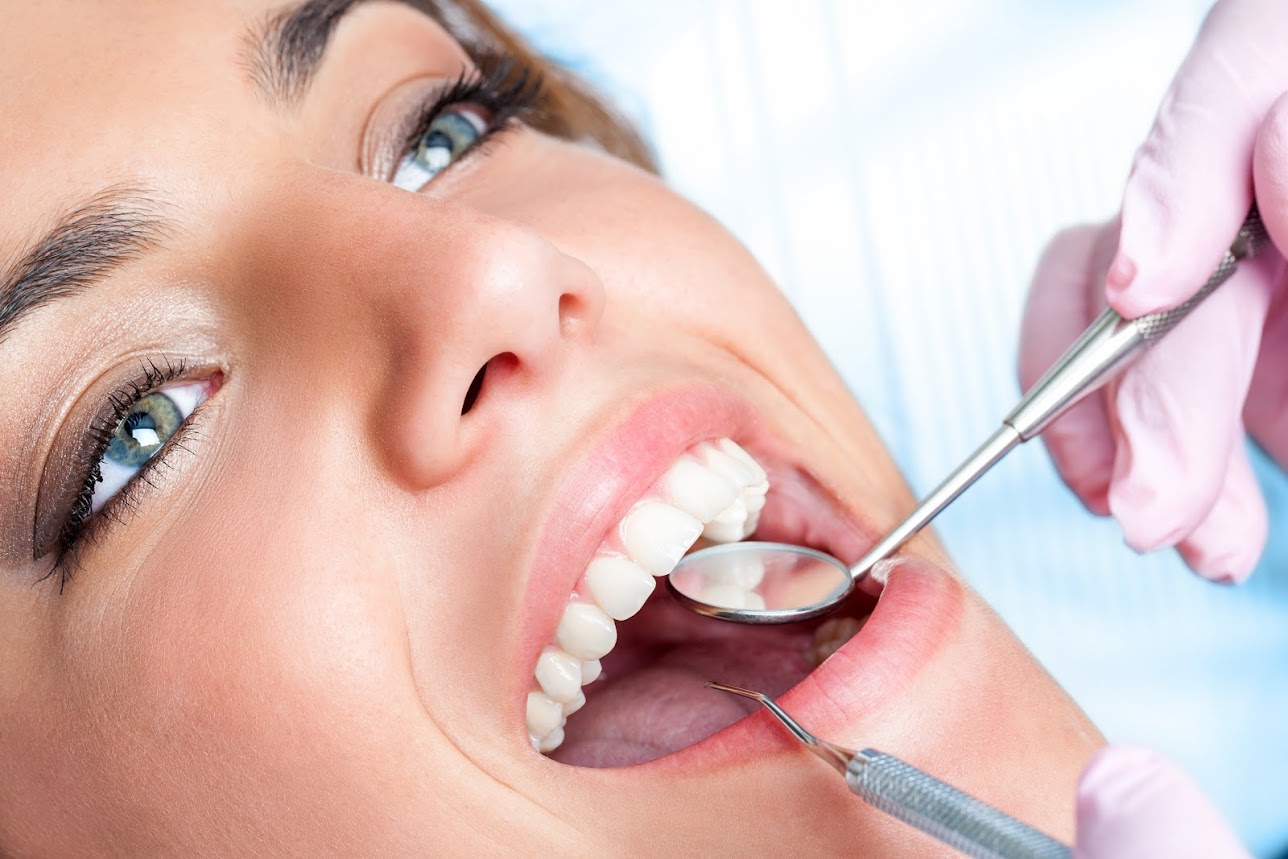teeth cleaning

2
CLEANINGS PER YEAR

30+
YEARS EXPERIENCE PER HYGIENIST
A professional teeth cleaning is where a dental hygienist removes plaque and hardened tartar that at-home brushing can’t address, using tools like ultrasonic scalers and hand instruments. This preventative procedure, recommended every six months by the American Dental Association, not only cleans your teeth but also involves a dental hygienist examining your mouth for signs of disease, decay, or oral cancer. The process may also include applying fluoride to strengthen teeth and provide personalized advice for better oral hygiene.
-
Plaque and Tartar Removal:
A dental hygienist will use an ultrasonic scaler, which uses vibrations and high-pressurized water, to remove plaque and tartar.
-
Hand Instruments:
Following the ultrasonic scaler, hand instruments are used to ensure all surfaces of the teeth are thoroughly cleaned, including the areas between your teeth and along the gumline.
-
Polishing:
After removing build-up, a coarse polishing paste (prophy paste) is used to smooth the tooth surfaces, leaving them shiny and removing any remaining plaque.
-
Fluoride Treatment:
A topical fluoride application can be given to strengthen enamel and protect against cavities, especially for individuals at high risk.
-
Oral Health Check:
The hygienist will also check for signs of gum disease, tooth decay, loose teeth, cancer, or other issues, and may perform digital x-rays to aid the dentist in a comprehensive oral exam.
-
Professional Guidance:You will receive advice on any areas of concern for your at-home oral hygiene routine, helping you improve your brushing and flossing techniques.
Benefits of teeth cleaning:
- Prevents tooth decay and gum disease.
- Removes stains and improves the appearance of teeth.
- Detects early signs of oral cancer and other health issues.
- Provides guidance for effective at-home care.
QUAD CLEANING
A quad teeth cleaning, also known as a deep cleaning, is a procedure to remove plaque, tartar (calculus), and bacteria from below the gum line in one section (quadrant) of the mouth at a time. This medically necessary treatment addresses periodontal disease (gum disease) by cleaning between the teeth and gums, often requiring local anesthetic to numb the area for patient comfort. Typically, only one or two quadrants are treated in a single appointment, allowing for focused attention and preventing further gum damage.
Why It’s Done
- Treating Periodontal Disease: A quad cleaning is essential for treating gum disease by removing the buildup that causes inflammation and infection around the tooth.
- Preventing Further Damage: It helps stop the progression of bone loss and damage to tooth roots, ligaments, and gums.
- Saving Gums: The primary goal is to remove harmful buildup to help the gum tissue heal and prevent the need for more invasive surgical treatments.
How It’s Performed
- Division into Quadrants: The mouth is divided into four sections: the upper right, lower right, upper left, and lower left.
- Anesthesia: Local anesthetic is often used to numb the specific quadrant being worked on, ensuring the procedure is comfortable.
- Scaling and Root Planing (SRP): Special tools are used to meticulously remove plaque, tartar, and bacteria from the tooth surface and below the gum line.
- Multiple Appointments: Due to the intensive nature of the procedure, one or two quadrants are often treated at a time, requiring multiple appointments to complete the entire mouth.
- Antiseptic Rinse: An antiseptic rinse may be used to cleanse the gum pockets after the cleaning.
What to Expect
- Recovery: Patients may experience some soreness or sensitivity, and a warm saltwater rinse is often recommended for soothing the gums.
- Follow-Up: Regular dental hygiene and follow-up visits, typically every three to six months, are crucial for maintaining gum health after a deep cleaning.
- Long-Term Benefits: A quad cleaning can effectively restore gum health and prevent further progression of gum disease without the need for surgery.

